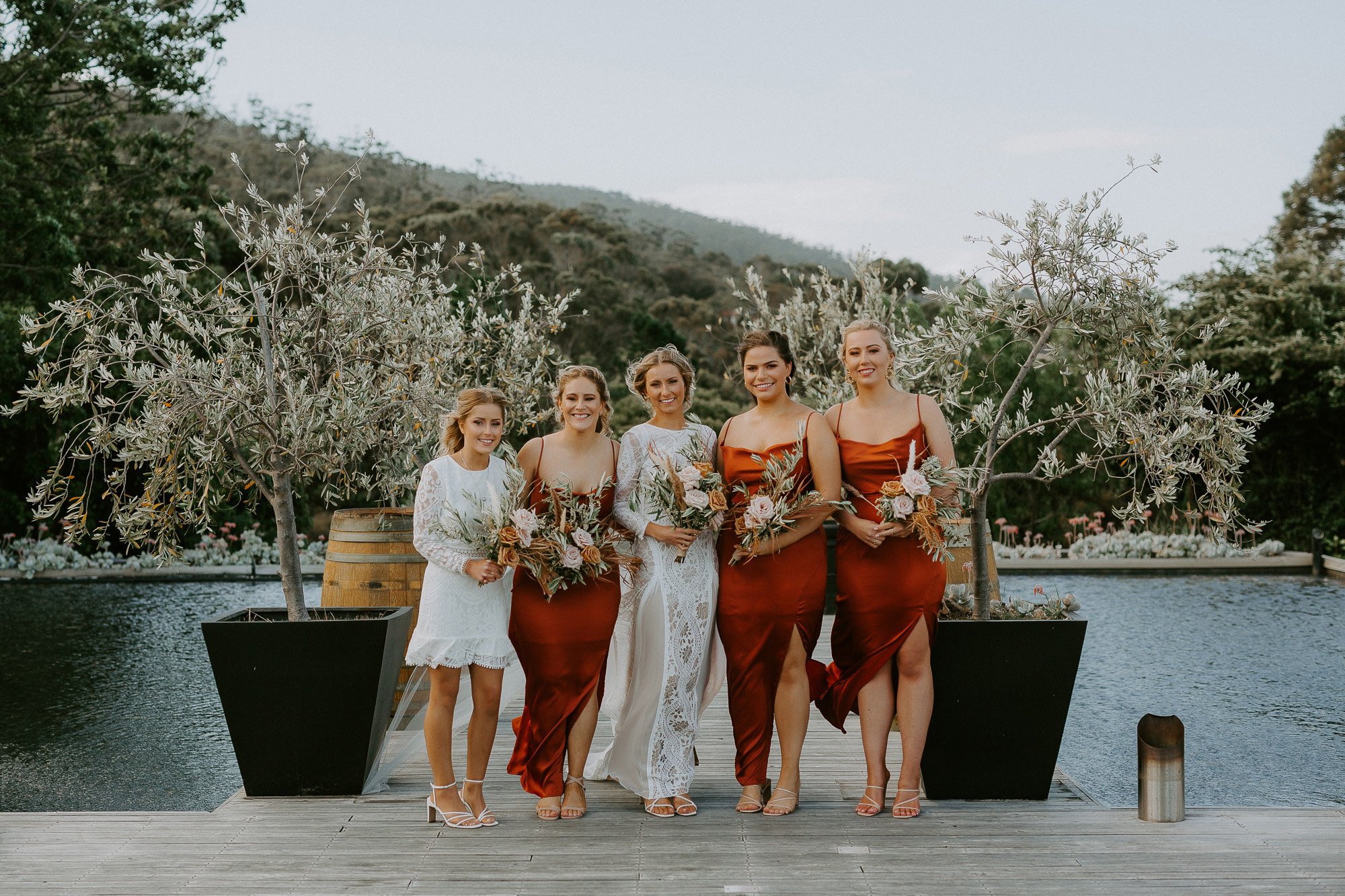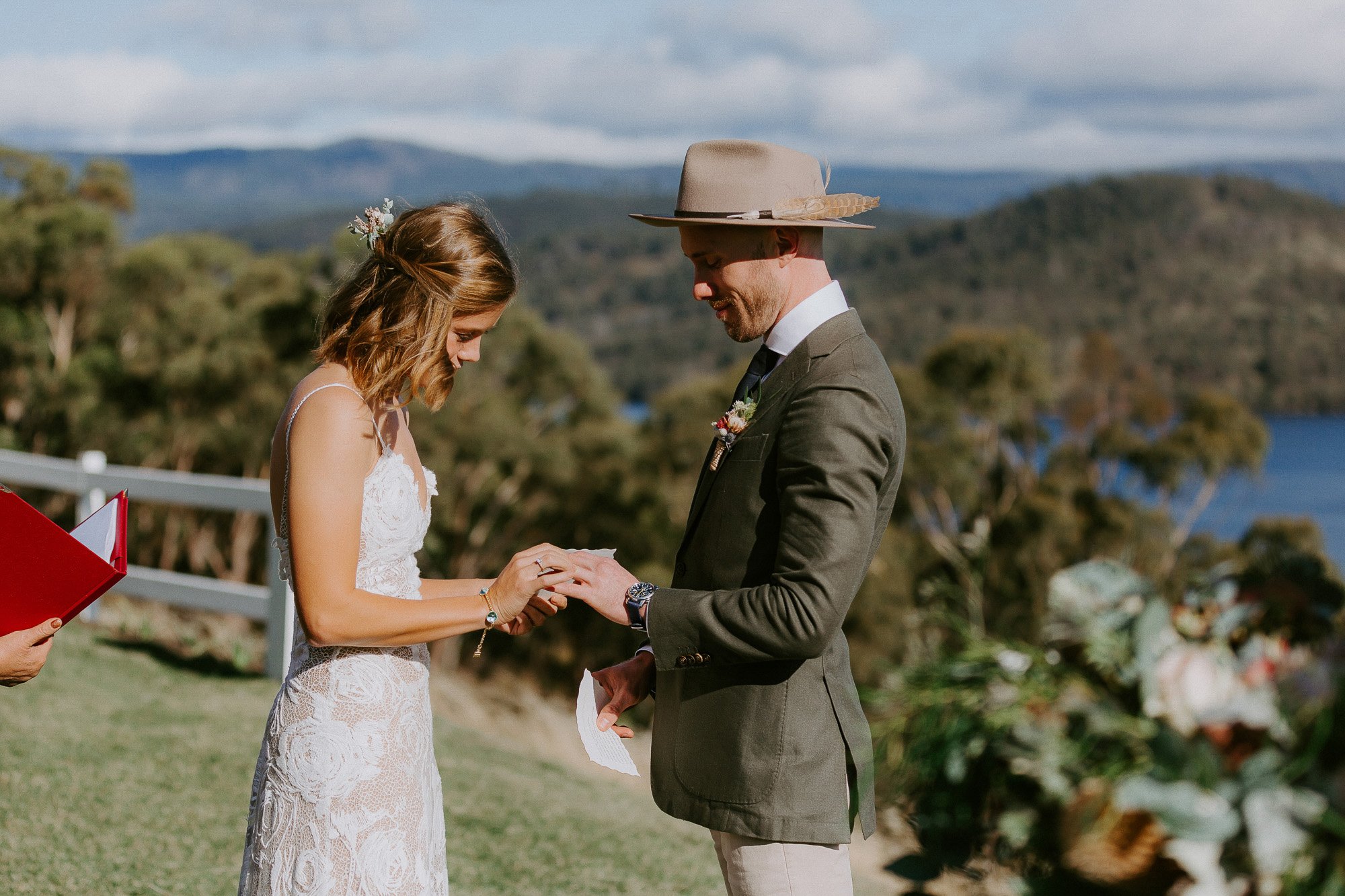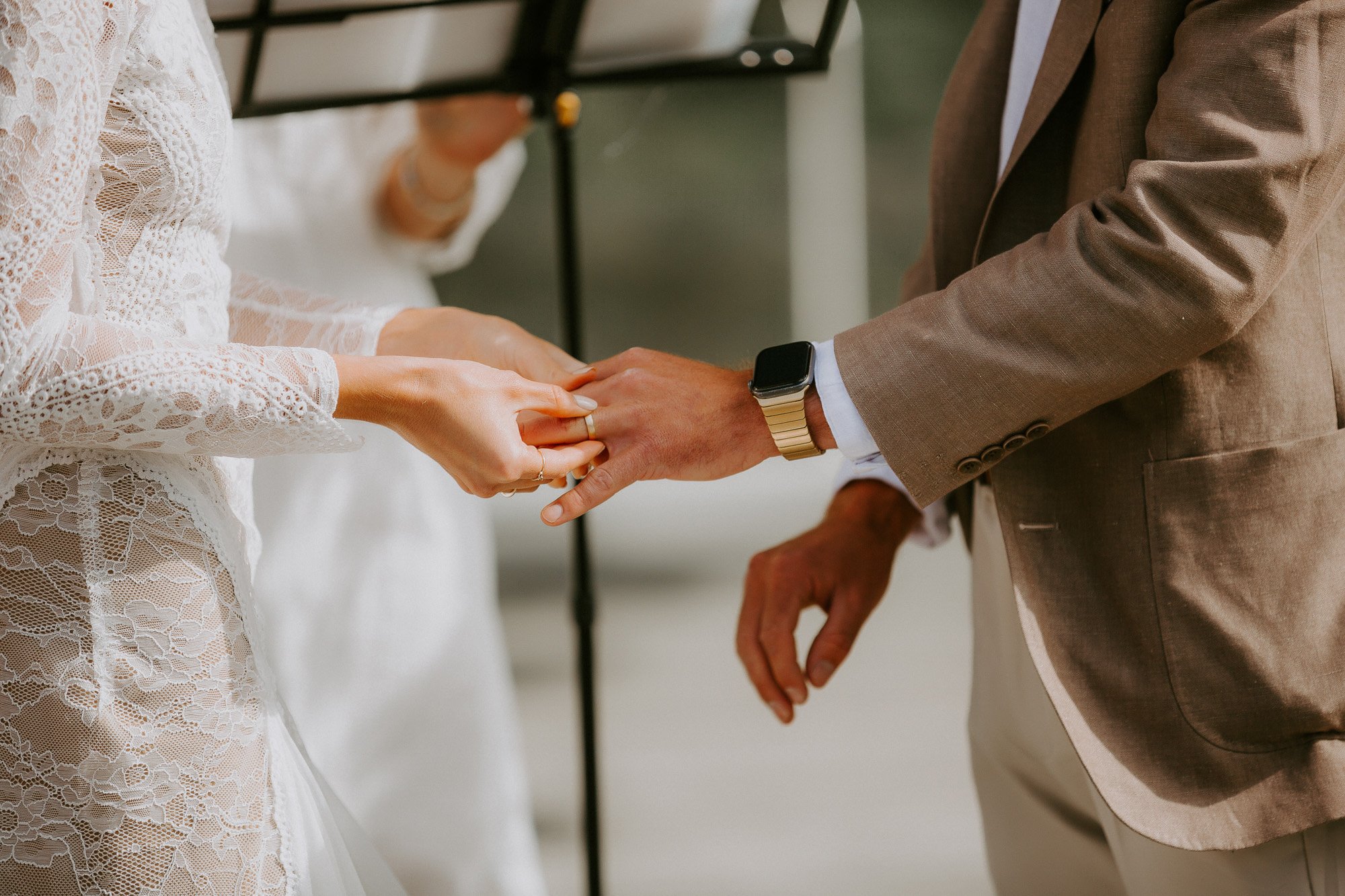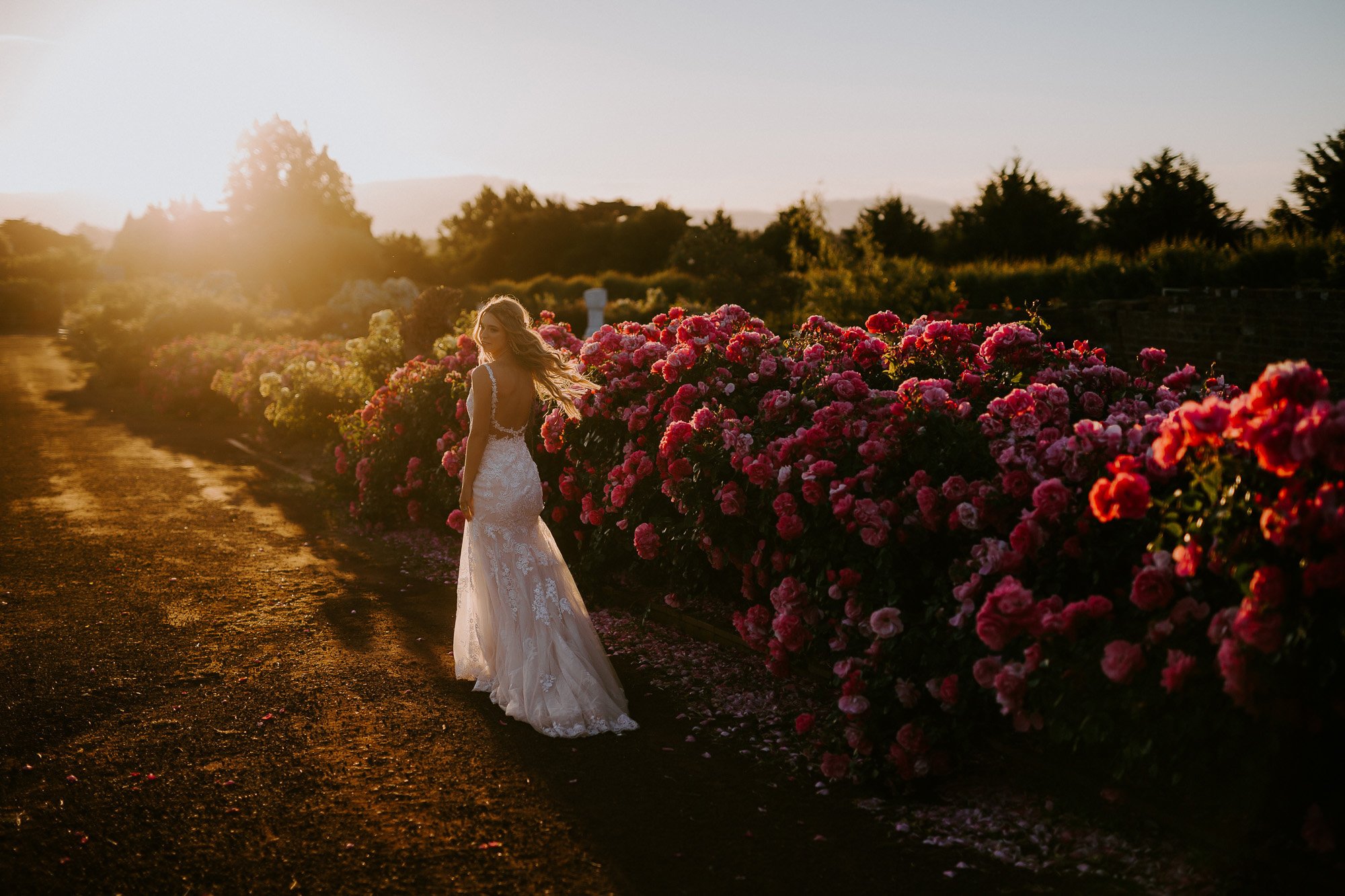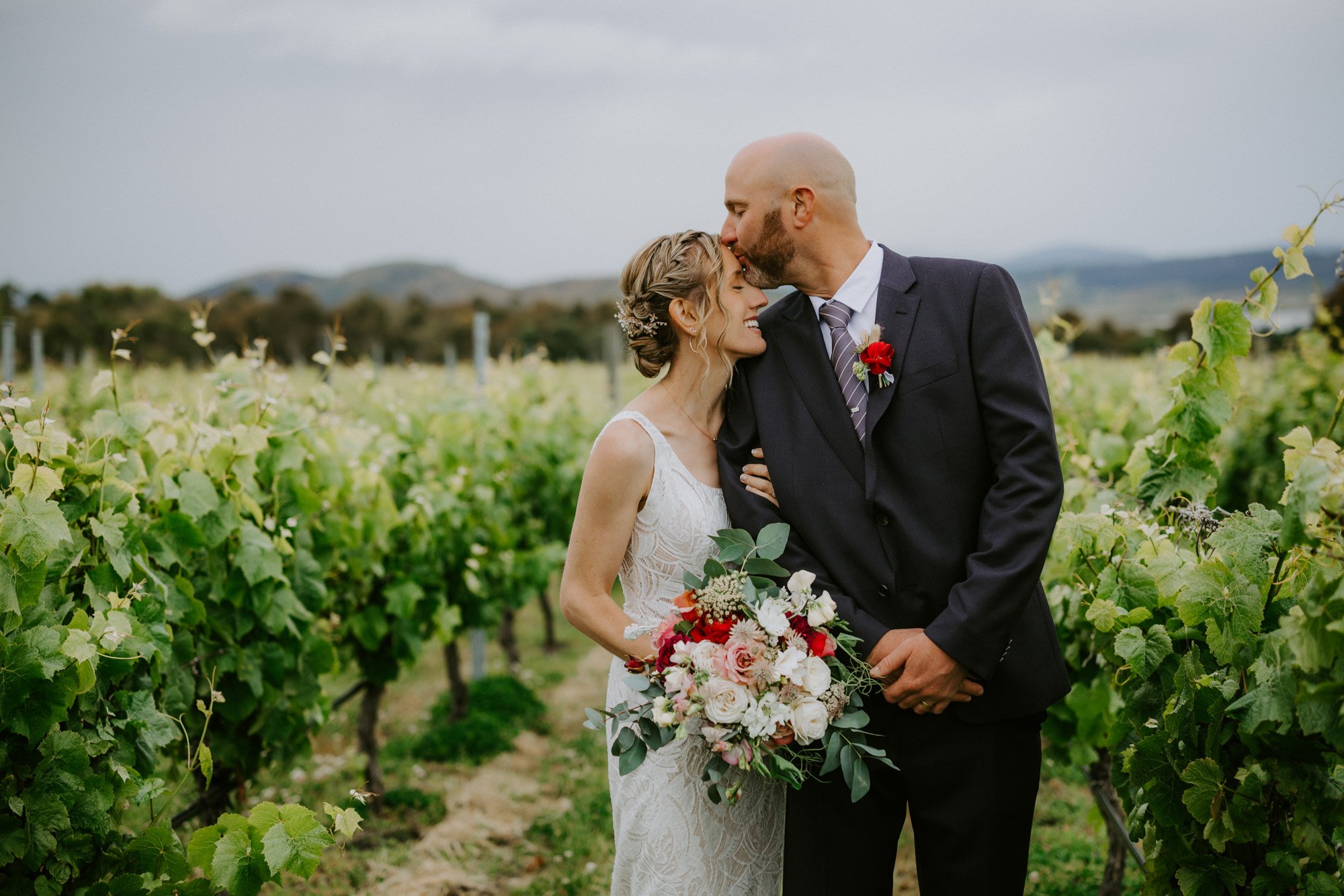The Art of Wedding Storytelling Through Photography
Capturing Love’s Narrative in a Frame
In the whirlwind of joy, laughter, and love that marks a wedding day, every moment pulses with stories waiting to be told. Wedding photography is not just about capturing images; it's an art form that weaves a narrative of the day, telling a story that extends far beyond the frame. The art of wedding storytelling through photography is about encapsulating the essence of the couple’s journey, the emotional depth of their celebration, and the unique spirit of their special day.
Why does this matter? Because when the cake has been eaten, the flowers have wilted, and the last guest has left, what remains are these visual stories. They are timeless narratives that transport you back to the moments of unspoken vows, stolen glances, and uncontainable joy. This article delves into how wedding photography transcends traditional portraiture, turning a day's worth of moments into a lifetime of memories.
From the subtle interplay of light and shadow to the candid expressions of joy and tenderness, each photograph is a chapter of a larger tale. It's about creating a legacy of memories that can be cherished and revisited, page by page, image by image. Join us as we explore how the art of storytelling through photography can immortalise your wedding day in its most authentic and beautiful form.
The Concept of Storytelling in Wedding Photography
Wedding photography as a form of storytelling transcends the mere documentation of an event; it captures the essence, emotion, and narrative that underpin the day. This approach to photography goes beyond posed portraits to seize the fleeting, spontaneous moments that truly depict the story of the couple and their celebration.
The Importance of Storytelling in Wedding Photography
Emotional Resonance: Storytelling in photography creates a deeper emotional connection. These images evoke the feelings of the day, from the anticipation-filled morning to the joyous reception, allowing couples to relive their wedding with all its emotional richness.
Uniqueness: Every wedding is unique, and storytelling captures this individuality. It's about representing the couple’s personal style, their relationships with friends and family, and the special moments that define their day.
Legacy: These photos become a part of the couple's legacy, telling their story to future generations. They are not just pictures but treasured memories that hold the power to transport the couple back to those precious moments.
Elements of Storytelling in Wedding Photography
Candid Moments: These are the unscripted, often unnoticed moments that truly reflect the spirit of the day – laughter during the speeches, tears during the vows, or the quiet reflection of the couple.
Details: The small details - a family heirloom, a handwritten note, the lace pattern on a wedding dress - all contribute to the narrative, giving context and depth to the larger story.
The Setting: The choice of venue and its ambiance play a significant role in the story. A grand cathedral, a cosy backyard, or a breezy beachfront each sets a different stage for the wedding narrative.
The art of storytelling through photography requires a keen eye, a sense of empathy, and a deep understanding of the narrative arc of a wedding day. It's about capturing the moments that might otherwise go unnoticed but together weave a tapestry that tells the full, vibrant story of the wedding day.
Ulla and Egor Wedding Photography Duo in Gold Coast
Key Elements of Storytelling in Wedding Photography
Storytelling in wedding photography is an intricate tapestry woven from various elements. Each component plays a vital role in narrating the wedding day's story, creating a vivid and emotional portrayal of the event.
Capturing Emotions
The core of wedding storytelling is capturing the range of emotions experienced throughout the day. From the anticipation in getting ready, the joyous tears during the ceremony, to the uninhibited joy of the reception, these emotions are the heartbeat of the wedding story.
Photographers adept in storytelling focus on these genuine expressions and interactions, capturing the laughter, tears, and warmth shared not just by the couple, but also by their loved ones.
Importance of Setting and Context
The setting of the wedding provides the stage for the day’s narrative. Whether it’s an intimate backyard, a grand ballroom, or a rustic vineyard, each location adds a unique flavor to the story.
Storytelling photography captures the essence of these settings – the grandeur, the simplicity, or the natural beauty, integrating them into the narrative to enhance the story.
Composition and Creative Framing
Composition plays a critical role in how a story is told through images. The use of creative framing, perspective, and composition techniques can add depth and interest to the photographs.
Elements like the arrangement of guests, the placement of objects, and the interplay of light and shadow are all compositional tools that help in creating compelling images.
Continuity and Flow
A well-told wedding story flows seamlessly from one moment to the next. Photographers achieve this through thoughtful sequencing of images that reflect the natural progression of the day.
The transition from quiet moments of preparation to the excitement of the reception should be fluid, each photo leading organically to the next, narrating the day's unfolding story.
Symbolic and Meaningful Details
Small details often hold great significance in weddings – the family heirloom, the handwritten vows, the carefully chosen decorations. These elements, while seemingly minor, contribute richly to the story.
Capturing these details provides a deeper understanding of the couple's personalities and the thought that went into their wedding, enriching the overall narrative.
By artfully blending these elements, wedding photography transcends mere documentation, transforming into a powerful narrative medium. It's about finding the story within each moment and capturing it in a way that resonates and endures.
The Photographer's Role in Wedding Storytelling
The photographer is much more than a mere observer at a wedding; they are the narrators, using their lens to craft a story. Their role is pivotal in shaping how the wedding day is remembered and retold through images.
The Approach to Storytelling
A storytelling photographer approaches a wedding with an eye for narrative. This means being attentive to the flow of the day, anticipating moments, and understanding the couple's vision.
They look for connections between people, the emotions that ebb and flow, and the small interactions that might otherwise go unnoticed but together form the essence of the wedding story.
Techniques for Capturing the Story
Anticipation and Timing: Great storytelling in photography hinges on anticipating moments before they happen. This requires experience, intuition, and a deep understanding of weddings.
Observation and Unobtrusiveness: The ability to blend into the background allows photographers to capture candid, authentic moments. It’s about being present without being intrusive.
Technical Skills: Proficiency in various photographic techniques, from lighting to composition, enables the photographer to capture the beauty and emotion of the day, regardless of the setting or conditions.
Understanding the Couple’s Vision
The photographer must work closely with the couple to understand their story - how they met, what's important to them, their style, and their vision for the wedding. This insight allows for a more personalized and meaningful photographic narrative.
Engagement sessions, pre-wedding consultations, and open communication are tools photographers use to align their storytelling approach with the couple's expectations.
Adaptability and Problem-Solving
Weddings are dynamic, with changing conditions and unforeseen occurrences. A skilled photographer must be adaptable, able to solve problems on the fly and still capture beautiful images that contribute to the story.
This adaptability also applies to dealing with different lighting conditions, venues, and cultures, each bringing its own set of challenges and opportunities for storytelling.
The photographer’s role in wedding storytelling is not just about taking pictures but about capturing the spirit and narrative of the day. It requires a balance of artistic vision, technical skill, and emotional intuition to weave a story that is as unique as the couple themselves.
Ulla and Egor Wedding Photography Duo in Gold Coast
Collaboration Between Couples and Photographers for Storytelling
The creation of a compelling wedding story through photography is a collaborative effort. It involves a partnership between the couple and the photographer, each playing a crucial role in crafting a narrative that is authentic and personal.
Sharing Your Story
It’s important for couples to share their story with the photographer – how they met, what they love about each other, significant moments in their relationship, and their vision for the wedding day. This information provides the photographer with a deeper understanding of the couple and what matters most to them.
Sharing inspirations, preferences, and even concerns allows the photographer to tailor their approach to align with the couple’s expectations.
Trust and Communication
Building trust with the photographer is key. When couples trust their photographer’s vision and expertise, it allows for more natural and candid photos.
Open and ongoing communication leading up to the wedding ensures that both the couple and the photographer are on the same page.
Involvement in the Planning Process
Involving the photographer in the planning process can be beneficial. They can provide insights on the best times for photography, lighting considerations, and even suggest photo-worthy spots at the venue.
Discussing the timeline of the day with the photographer ensures that there is ample time allocated for capturing all the important moments without feeling rushed.
Being Yourselves
The best wedding stories are those where the couple is authentic. Being yourselves and embracing the day’s emotions, whether it’s laughter or tears, allows for more genuine and heartfelt images.
Encourage spontaneity and fun – sometimes the most memorable photos are those unplanned moments.
Post-Wedding Contributions
After the wedding, couples can contribute to the storytelling process by selecting images for their album that they feel best represent their day. This collaborative effort in curating the final album ensures that the story is told exactly how they envisioned it.
Through collaboration, couples and photographers can create a wedding album that is not just a collection of photos but a narrative that tells the story of the day in a way that is both meaningful and personal.
Utilising Lighting and Colour in Wedding Photography Storytelling
Lighting and colour are powerful tools in the art of photography, capable of transforming the mood and atmosphere of a scene. In wedding storytelling, how a photographer manipulates these elements can significantly impact the narrative conveyed through the images.
The Role of Lighting
Mood Creation: The quality of light, whether it’s the softness of a cloudy day or the warmth of a sunset, sets the mood for each photograph. A skilled photographer knows how to use lighting to create the desired atmosphere, whether it’s romantic, dramatic, or joyful.
Highlighting Moments: Strategic use of lighting can highlight key moments, like the first kiss or the first dance, drawing attention to the emotional pinnacle of the scene.
Colour Theory in Photography
Conveying Emotions: Colours evoke different emotions – warm tones like red and orange can evoke feelings of warmth and love, while cooler tones like blue and green can create a sense of calm and serenity.
Consistency in Storytelling: A consistent colour palette throughout the wedding photos can help create a cohesive narrative. It can tie together various elements of the day, from the bridal party’s attire to the venue’s decor.
Natural Light vs. Artificial Light
Natural Light: Utilizing natural light can lend a soft, organic quality to photos. The time of day, from the gentle morning light to the golden hour in the evening, offers varying conditions for storytelling.
Artificial Light: In situations where natural light is insufficient, such as indoor receptions, the use of artificial lighting is crucial. Techniques like off-camera flash can create dramatic and visually striking images.
Black and White Photography
Timelessness: Black and white photos can add a timeless feel to the wedding story. They focus on the emotion of the moment by stripping away the distractions of colour.
Emphasis on Contrast and Texture: These images rely on contrast, texture, and composition to tell the story, often leading to powerful and emotive imagery.
Post-Processing and Colour Grading
Enhancing the Story: In post-processing, photographers can adjust colours and tones to enhance the mood of each image. Colour grading can either unify the look of the entire wedding series or be used to highlight particular emotions in specific scenes.
Through the intentional use of lighting and colour, photographers can craft a visual narrative that not only documents the wedding day but also captures the essence and emotion of each moment, adding depth and dimension to the story being told.
Candid Moments vs. Posed Shots in Wedding Storytelling
The interplay between candid moments and posed shots is essential in weaving a comprehensive narrative of a wedding day. Both styles contribute uniquely to the storytelling, capturing the authenticity of the day as well as the couple's vision and style.
Ulla and Egor Wedding Photography Duo in Gold Coast
1. The Authenticity of Candid Moments:
Candid photography is key to capturing the genuine essence of the wedding day. These unposed moments reflect the real emotions, interactions, and spontaneous events as they naturally unfold.
Candid shots often include laughter during the reception, tears of joy during the ceremony, and the excitement of the dance floor – moments that are filled with genuine emotion and energy.
2. The Art of Posed Photography:
Posed shots, while more controlled, are equally important. They ensure that essential group photos and key portraits of the couple are captured beautifully and artistically.
These shots allow for creativity in terms of backdrop, composition, and posing, ensuring that the couple and their loved ones are photographed in the best possible light and setting.
3. Blending Both Styles for a Complete Narrative:
A skilled wedding photographer knows how to seamlessly blend candid and posed photography. This blend ensures that the story includes both the natural flow of the day and the essential formal shots.
The photographer's ability to navigate and transition between these styles keeps the day moving smoothly and ensures a diverse and comprehensive collection of images.
4. Encouraging Natural Interactions in Posed Settings:
Even in posed settings, photographers can encourage natural interactions to capture more relaxed and authentic images. Simple actions like walking hand in hand, sharing a joke, or a spontaneous embrace can make posed shots feel more candid.
5. The Role of the Photographer in Directing Shots:
The photographer’s direction is crucial in posed photography. Their guidance can help ease any nervousness and ensure that poses look natural and comfortable.
Effective communication and a clear understanding of the couple’s preferences are essential in achieving the desired outcome in both posed and candid photography.
By striking the right balance between candid and posed photography, the wedding album becomes a well-rounded story. It not only documents the day as it was lived but also as it was dreamed.
Creating a Comprehensive Wedding Photo Album
A well-curated wedding photo album is more than a collection of beautiful images; it's a narrative that unfolds the story of one of the most significant days in a couple's life. Here are some tips to ensure your album is as rich and varied as the wedding day itself:
1. Include a Variety of Perspectives:
Ensure your album contains a mix of wide-angle shots that capture the venue and setting, close-ups that focus on details and emotions, and mid-range shots that include groups and interactions.
This variety offers a more complete and dynamic representation of the day, providing different perspectives on the same moments.
2. A Balanced Mix of Candid and Posed Photos:
Include both candid moments that capture the essence of the day and posed shots that ensure key family members and friends are represented.
This balance ensures that the album is not only authentic and spontaneous but also respectful of traditional elements and important relationships.
3. Chronological Storytelling:
Arrange the photos in a chronological order to narrate the story from beginning to end – from getting ready to the ceremony, reception, and the final send-off.
This structure helps those who weren’t present at the wedding to experience the day as it unfolded.
4. Highlight Key Moments:
Give special attention to key moments such as the exchange of vows, the first kiss, cutting the cake, and the first dance. These milestone moments are pivotal points in the wedding narrative.
A focus on these moments provides anchors in the story, around which the rest of the day’s events revolve.
5. Don’t Overlook the Small Details:
Include photos of the little details that the couple put thought into – the rings, invitations, decorations, and any unique touches. These elements add depth and context to the story.
These details often hold sentimental value and contribute to the uniqueness of the wedding.
6. Collaborate with Your Photographer:
Work closely with your photographer when selecting images for the album. Their professional eye can help in choosing the photos that best tell the story.
Your photographer can also suggest creative layouts and presentations for the album to enhance the storytelling.
A comprehensive and thoughtfully assembled wedding photo album should take its viewers on a journey, vividly recounting the joy, love, and beauty of the day. It’s a keepsake that encapsulates not just memories but the full narrative of your wedding.
Post-Production: Enhancing the Wedding Story Through Photography
Post-production is a crucial phase in wedding photography where the raw images are transformed into the final pieces that tell the couple's story. This process is not just about correcting imperfections but about enhancing and refining the narrative of the wedding day.
Ulla and Egor Wedding Photography Duo in Gold Coast
1. Editing for Mood and Tone:
The editing process allows photographers to adjust the mood and tone of the photos. This can involve colour grading to match the wedding’s colour palette, adjusting exposure and contrast to highlight certain elements, or applying filters for a specific stylistic effect.
The choice of editing style can significantly impact how the story is perceived – whether it’s a vibrant and lively mood or a more subdued and intimate atmosphere.
2. Selective Focus and Emphasis:
Post-production can be used to draw focus to particular aspects of a photo, such as the couple in a busy scene or a small but significant detail. Techniques like vignetting or selective sharpening help in guiding the viewer’s eye.
This selective emphasis helps to convey the story's priorities and focal points, ensuring that key moments and details stand out.
3. Black and White Conversion:
Converting certain images to black and white can add dramatic effect, emotional depth, or a timeless quality to those photos.
Black and white images often emphasise emotion and texture, stripping away the distractions of colour to focus on the moment's raw essence.
4. Cohesion and Consistency:
Ensuring a consistent look across all photos is important in maintaining the narrative flow. Consistent editing ensures that the album feels cohesive and unified.
This consistency in style reinforces the wedding’s theme and atmosphere, making the story more compelling and immersive.
5. Creative Compositions and Montages:
Post-production allows for the creation of creative compositions, such as montages or collages, that can narrate a part of the wedding story in a single image.
These compositions can be particularly effective in summarising portions of the day or in showcasing parallel events happening simultaneously.
6. Final Album Layout and Design:
The final step in post-production is the layout and design of the wedding album. The arrangement of photos, the choice of which images to include side by side, and the overall flow of the album contribute significantly to how the story is experienced.
Post-production in wedding photography is an art form in itself, playing a critical role in how the wedding story is told and remembered. Through skilful editing and creative vision, photographers can elevate the narrative, ensuring that the memories of the day are preserved in the most beautiful and meaningful way.
Ulla and Egor Wedding Photography Duo in Gold Coast
The Lasting Impact of Storytelling in Wedding Photography
As we come to the end of our exploration into the art of wedding storytelling through photography, it's clear that this approach offers much more than just a visual record of the day. It weaves a narrative that captures the essence, the emotions, and the unique journey of each couple. This storytelling is not about creating perfect pictures; it's about capturing real moments, genuine emotions, and the unscripted beauty of a wedding day.
The Power of a Well-Told Story:
A wedding album crafted through storytelling becomes more than a collection of images; it becomes a storybook of one of life’s most cherished chapters. These photographs, rich in emotion and filled with details, invite the couple, their families, and future generations to relive the day with every turn of the page.
The Photographer's Artistry:
The photographer's role as a storyteller is pivotal. Their artistic vision, technical skill, and emotional intuition combine to capture the subtleties and grandeur of the wedding day. Through their lens, fleeting moments become lasting memories, and ordinary scenes are transformed into poignant narratives.
A Legacy of Memories:
The true value of storytelling in wedding photography lies in its ability to create a lasting legacy. These photos become a treasure, a visual legacy that encapsulates the joy, love, and spirit of the couple's special day. They are memories that will be cherished, shared, and revisited for years to come.
In closing, the art of wedding storytelling through photography is a celebration of love and life. It’s about capturing the laughter, the tears, the quiet moments, and the grand celebrations. It's about preserving not just the events, but the feelings and stories that make the wedding day uniquely yours.
Ulla and Egor Wedding Photography Duo in Gold Coast
Ulla and Egor Wedding Photography Duo in Gold Coast
Ulla and Egor Wedding Photography Duo in Gold Coast
